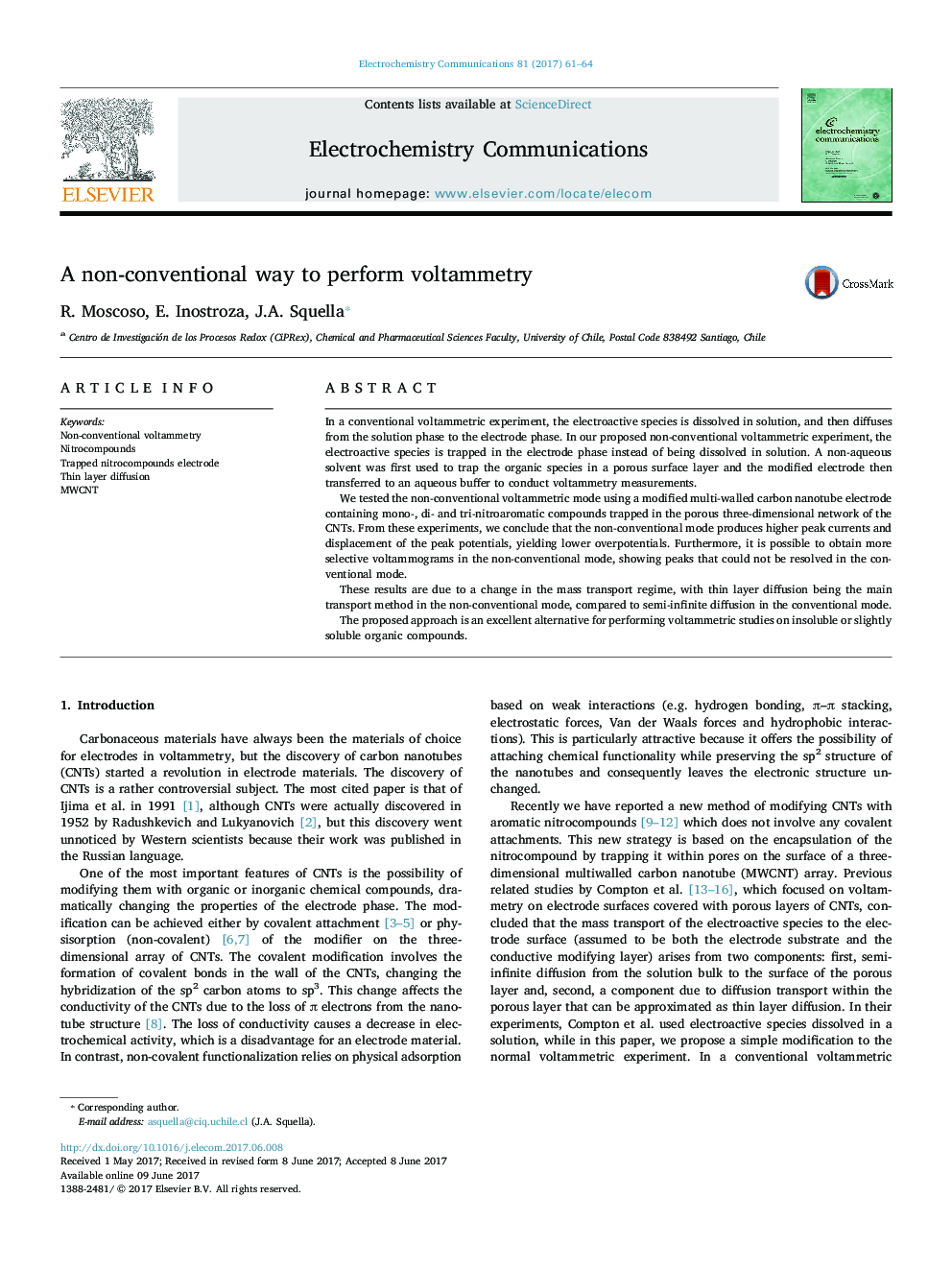| Article ID | Journal | Published Year | Pages | File Type |
|---|---|---|---|---|
| 6469653 | Electrochemistry Communications | 2017 | 4 Pages |
â¢Non-conventional voltammetric experiment studies electroactive species trapped in a layer of MWCNTs.â¢Nitro reduction using conventional (electroactive species in solution) and non-conventional approaches are compared.â¢Non-conventional voltammetry produces more resolved and intense peaks.â¢The non-conventional approach prioritizes a thin-layer diffusion regime in the porous layer.â¢The method allows the study of insoluble or poorly soluble species in aqueous medium.
In a conventional voltammetric experiment, the electroactive species is dissolved in solution, and then diffuses from the solution phase to the electrode phase. In our proposed non-conventional voltammetric experiment, the electroactive species is trapped in the electrode phase instead of being dissolved in solution. A non-aqueous solvent was first used to trap the organic species in a porous surface layer and the modified electrode then transferred to an aqueous buffer to conduct voltammetry measurements.We tested the non-conventional voltammetric mode using a modified multi-walled carbon nanotube electrode containing mono-, di- and tri-nitroaromatic compounds trapped in the porous three-dimensional network of the CNTs. From these experiments, we conclude that the non-conventional mode produces higher peak currents and displacement of the peak potentials, yielding lower overpotentials. Furthermore, it is possible to obtain more selective voltammograms in the non-conventional mode, showing peaks that could not be resolved in the conventional mode.These results are due to a change in the mass transport regime, with thin layer diffusion being the main transport method in the non-conventional mode, compared to semi-infinite diffusion in the conventional mode.The proposed approach is an excellent alternative for performing voltammetric studies on insoluble or slightly soluble organic compounds.
Graphical abstractDownload high-res image (202KB)Download full-size image
